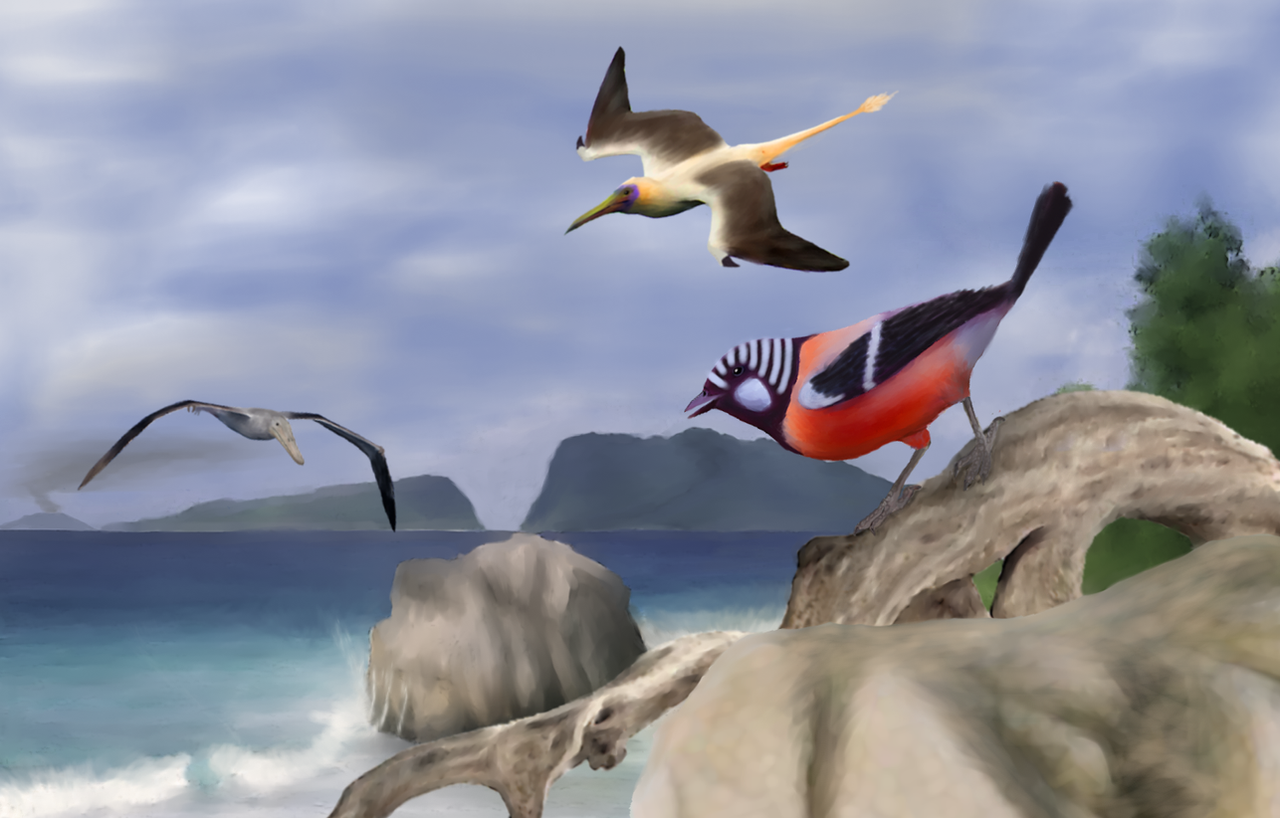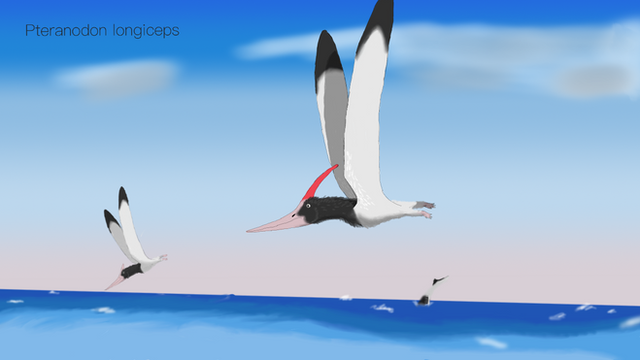HOME | DD
 Dragonthunders — The last song
Dragonthunders — The last song

Published: 2016-09-04 00:42:40 +0000 UTC; Views: 14987; Favourites: 174; Downloads: 14
Redirect to original
Description
The little bird on the fallen branches is just looking for small insects to satisfy itself.
Around it, the great flying kings of the time stand, above, one of several flying crocodiles, and at the left, a newcomer which appeared just a few dozens of millions of years, a highly derived monitor lizard descendant.
Its little mind is not able to understand what now means its existence, being the only one left of its type in the world, being the last of a magnify group.
For over 210 million years, since the death of its non-avian relatives and throughout the age of mammals, birds were the dominant group for excellence in air, land, and even water, with tens of thousands species, covering amounts of niches and colonize every corner of the planet. One of its most representative orders were the passerine, the songbirds, queens of diversity in their periods of greater stability, formed more than half of the avian species. Its adaptability was a key to their survival, much higher than any other bird, making them for tens of millions of year across periods, great survivors. However, a new catastrophe of devastating levels led to an impending fall, 145 million years after humans disappear. The end of the Cenozoic, finished many species and such diversity did not return to recover.
Gradually, they began to be replaced quickly by new varieties of birds, but also for a rising group of flying descendants of crocodiles, now called Auspictida. Of course, they did not give up abruptly, some passerine birds were able to find refuge on land with the extinction of mammals and others took completely different niches, retaining its air capabilities, but under the shadow of newcomers flying. Therozoic During the period, 200 million years these new conditions changed completely the air hierarchy. At the end of Metamonus period (349 M.Y.) the flying birds still exist in a considerable amount in many parts of the world, however, passerine birds no longer exist as such, there is only one living genus. As the now extinct tuatara, this bird is the last of its kind, confined to one of several islands that once formed the Antarctic Peninsula, but have moved closer to the tropics.
The Apocleavis magnifica is a little omnivorous bird, of about 8 cm long, with a wingspan of just 20 cm. As their ancestral forms, this has a well-developed vocal organ that allows it to produce quite elaborate songs. The songs depending on its use can have a variety of shades, from songs to establish territories, attract mates or to communicate. Both males and females have almost the same color and patrons, with a reddish body, and dark purple color around the head, wings and tail, scattered with white stripes around the head and wing, with two spots on the cheeks; the only difference is between both is that the females have red stripes on the tip of the tail, and her cheek spots are united below the neck. They are a monogamous species, but only temporarily, because after giving care of their young, male and female tend to separate to meet new couples
The breeding time takes place mainly in summer, it is often communal in the case of nest place, but these nests are always individual per couple; are built in the top of the tree trunks, usually composed of different pieces of plant material. To achieve a sufficiently large number of individuals, these birds are able to bind together their beehive-shaped nests with different "cells" close to each other. A female usually takes less than 3 weeks to incubate the eggs, and less than two months to care for them. From here, these birds take a few months to mature sexually, and the life expectancy is always around 15 years.
This was undoubtedly the greatest achievement by an animal in its class, last this long, however, this bird already has the days counted...
Its world is going downhill with the new climatic and environmental changes that will occur between the transitions from the Therozoic to the Phinizoic, something that these birds will not have the ability to survive. There is still many birds remain in the path for the next era; however, for the last of the songbirds, it is just the end.
The choir of the earth loses one of its best singers, gradually mutes by the clutches of extinction.
Related content
Comments: 33

👍: 0 ⏩: 0

Good picture. But I'll definitely admit that it would be SO sad if the beautiful melodies of every songbird we know and love went extinct like the dodos. In fact, what animals do you think would perfectly fill in the niche for songbirds when it comes to playing beautiful chirps and twitters in forests and/or other kinds of possible habitats (after the apocleavis goes extinct for good)?
👍: 1 ⏩: 0

Some how this is bringing up something tragically familliar... ono
👍: 2 ⏩: 1

Oh yes, is pretty familiar.
👍: 0 ⏩: 0

It’s sucks and sad when you’re the last of your kind. Great story to go with this last songbird.
👍: 0 ⏩: 2

Yes indeed.
Thank you
👍: 0 ⏩: 0

The song birds ARE the most diverse groups of birds alive today....and to see them reduced to a single relic species which is doomed for extinction just....makes me tear up inside(and nearly outside to).....You did an amazing job with their evolution and their near extinction(it wont be long for them).....
👍: 0 ⏩: 1

I whole heartedly agree with you.
👍: 0 ⏩: 0

To the Time Lost explorer, this world would seem like a paradox.
But I like it.
👍: 0 ⏩: 1

beep beep beep beep
(Noice stuff you gout here m8)
👍: 0 ⏩: 1

quizás, pero con la capacidad para evolucionar y adaptarse seria extraño que no dejaran algún descendiente, quizás no sea un aves, tal vez un nuevo grupo de vertebrados
👍: 0 ⏩: 1

Debo decir sin embargo, nunca he inferido que ellos no dejaron descendientes, simplemente que el grupo mismo se extinguio, en este punto del futuro lejano.
Aqui no contemplo las capacidades de un grupo, sino de sus posibles finales.
👍: 0 ⏩: 0

Extremely nice Picture and Idea! Thought it is kinda sad...
.
👍: 0 ⏩: 1

Thank you.
Yeah 
👍: 0 ⏩: 0

Interesting stuff.
In the picture I like how the flying crocodile and the flying monitor lizard look so radically different from their ancestors of our time but the far future songbird is still clearly recognisable as a songbird.
👍: 1 ⏩: 1

Thank you
It is a small detail to add as a sign that there will always be degrees of changes in certain organisms, some changed greatly, and others are likely to remain almost unchanged.
👍: 0 ⏩: 0

How do you come up with this stuff!?!?
Every single thing you make is so creative and unique! How do you do it!??
👍: 0 ⏩: 1

Thanks for that thoughtful and insightful response
👍: 0 ⏩: 0






























